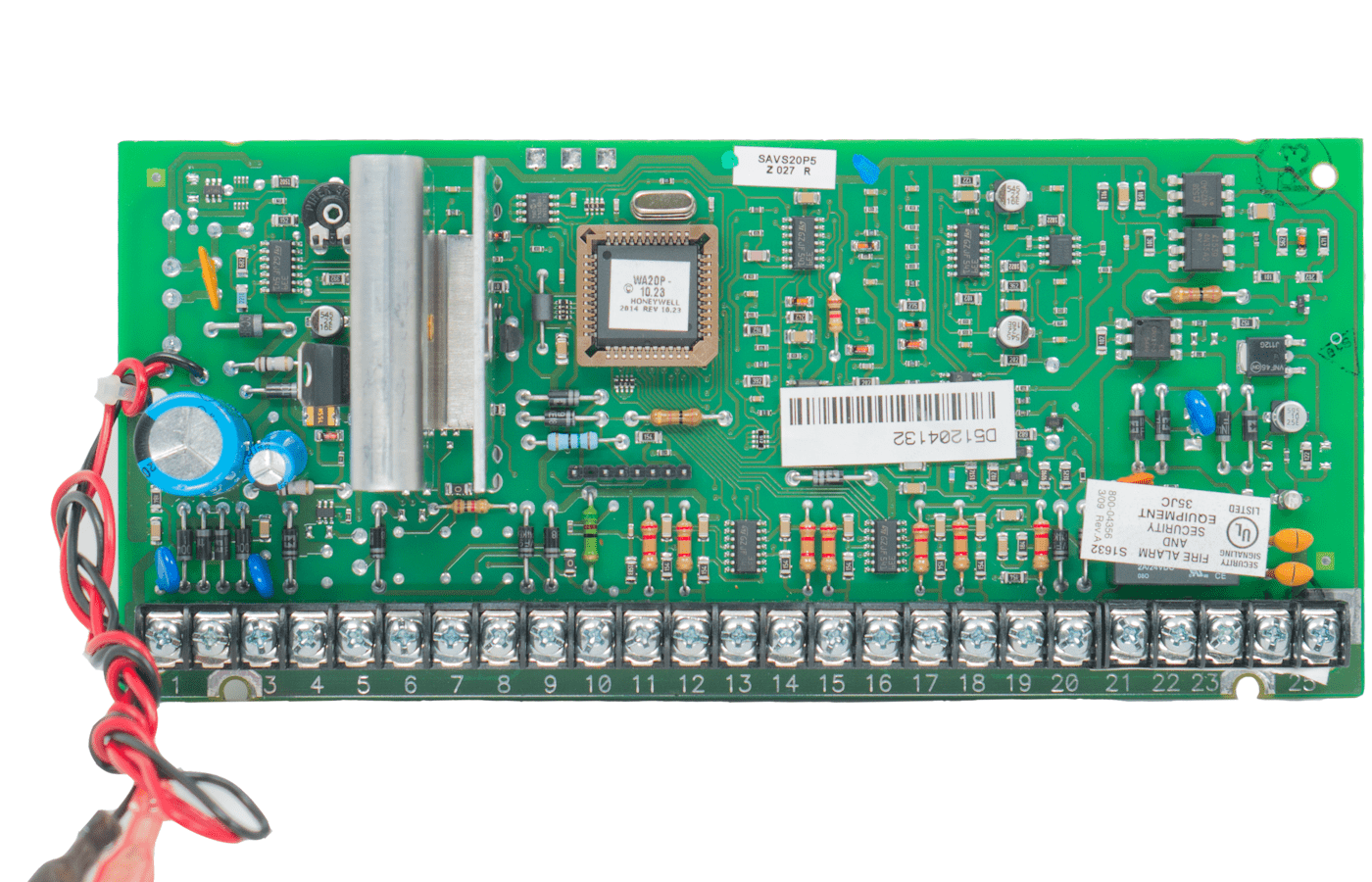We’ve been using keyfobs with our security system for a couple weeks now, which is enough to get a good feel for how they work. First off, the reliability is a lot better since I relocated the panel’s wireless receiver about 40 feet closer to the garage door area. I have a feeling that the house’s aluminum siding was interfering with reception in the receiver’s old location.
Currently, I have the fobs programmed to arm/disarm totally independently from the garage door opener. That is, two keypresses are required when either coming or going: One to arm/disarm the system, and another to open/close the garage door. This has proven to be a little inconvenient, particularly when arming/closing/leaving. This particular process would be a lot smoother if I could get the “arm” button to shut the garage door as well as arming the system. I’ve come up with a tentative plan to accomplish that, if it works.
[More:]
First things first: For this to work, the garage door needs to be set up as what Ademco calls a “vent” zone. With a vent zone, the system can be armed while the zone is faulted (i.e. the garage door is still open). Then, when the zone is restored, it is automatically armed. To set this up on my panel, I had to define a custom zone type for the garage door. See your panel docs for details.
With that out of the way, the plan is to use two dry-contact relays (these are provided by the panel as on-board triggers, as well as by zone expanders and add-on relay boards):
- Wire the two relays in series (connect N.O. terminal from relay #1 to C terminal on relay #2)
- Connect C terminal from relay #1 and N.O. terminal from relay #2 to the terminals on the garage door opener
- Program relay #1 to activate (close) when garage door zone is faulted and open when zone is restored
- Program relay #2 to close for 2 seconds when “Arm” button on keyfob is pressed
- Program both relays to close for 2 seconds when “Door” button on keyfob is pressed
Explanation: The garage door operation is controlled by shorting two terminals together. If you do this when the door is closed, it opens, and vice-versa. With this method, we have no idea what state the door is in. So, we can’t use a single relay and just blindly close the contacts when arming. Otherwise, if we armed when the door was already closed, it would open, which we obviously don’t want.
To get around this, we need some way to tell whether the door is open or closed. That’s where the garage door’s zone comes in. We assume that if the zone is faulted, the door is open, and if not faulted, the door is closed. So, wire two relays in series, so that when both are closed, the door triggers. Then program one to close only when the garage door is open (faulted), and the other one to close when the “Arm” button is pressed. So when arming with the fob, the door is only triggered if it’s already open. This should work reliably almost all the time; the door can occasionally get into a half-open state where the zone will be faulted but the door will open when tripped. But, this doesn’t happen all that often, and just tripping it again will close it.
For the “door” button, which triggers the door regardless of its state, we just program both relays to momentarily close. This unconditionally triggers the door. Only one potential “gotcha” here: I’m not sure what the panel will do if a relay is already activated and we send it another signal to momentarily close the relay. We need it to keep the relay activated. If it doesn’t, there’s a chance that the zone-activated relay could end up open at the wrong time, and the “Arm” button then wouldn’t close the door as expected. In this case, we’d need to add a third relay in parallel with the opener, to handle the “door” button. But I’m hoping that won’t be necessary.
What about disarming, you ask? Can we get the system to disarm automatically when the door is opened via the keyfob? Well, here’s the deal. When arming, you always want to close the garage door. However, the inverse is not always true: You might want to disarm the system without opening the garage door. So, for now, I’ve chosen to leave this as a two-step process. I may rethink it down the road.
5/18: I’ve been kinda busy to do much with this the past 2 days, but this morning I got around to doing a brief proof-of-concept, to see if the panel could activate two relays simultaneously. I currently have a keypad function key programmed to trigger the garage door opener. There are two steps necessary to set this up:
- Program the function key for “Device Activation” (
*57)
- Program an output action (
*80), triggered by “zone type” 66 (function key), which closes the garage door’s relay for 2 seconds when triggered.
To do my test, I just added an additional output action to turn an X10 light on/off with the same function key trigger (zone type 66). It worked — when I pressed the function key, the garage door opened and the X10 light turned on at the same time. That bodes well for this project; I should be able to do it with 2 relays and a bare minimum of wiring. Stay tuned!
5/19: Work on this continues at a glacial but steady pace. Today I identified the relay wires on the zone expander and verified that the relay is working, by programming a function key to toggle the relay and then checking the resistance between the C and N.O. wires. Wire IDs are as follows. Relay 1: C – Brown; N.O. – Yellow. Relay 2: C – Violet; N.O. – White. To wire in series: Splice yellow to violet, and connect brown and white to garage door opener terminals.
5/21: Wired the relays up in series this morning, and everything seems to work fine. Assuming there are no problems, the only thing left to do is solder the splices and clean up all my wiring. Then it’s done!
For programming… since I have a lot of keyfob zones that need to trip various garage door relays, I decided to create two zone lists (*81) for zones that trip relay #1 and #2, respectively. That saves me from defining identical output functions for each individual button zone. It seems to work well that way.

